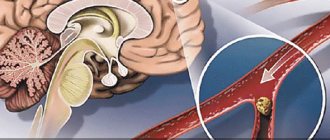The recommended daily intake (RDI) for adults is 700 mg, but growing teenagers and pregnant women need more. The daily value was estimated at 1000 mg, but was recently updated to 1250 mg to meet the needs of these groups (,).
Phosphorus deficiency is rare in developed countries, as most adults consume more than recommended amounts each day (, ).
Although phosphorus is beneficial for most people, it can be harmful when consumed in excess. People with kidney disease may have trouble clearing it from the blood. Therefore, it may be necessary to limit your phosphorus intake ().
Phosphorus is found in most foods, but some foods are particularly good sources. This article lists the 12 foods that contain the most phosphorus.
Chicken and turkey
Products containing large amounts of phosphorus - list of products
A 4-ounce serving of roasted chicken or turkey contains about 300 mg of phosphorus, which is more than 40% of the recommended daily intake (RDI). The meat of these birds is also rich in proteins, B vitamins and selenium (,).
White meat poultry contains slightly more phosphorus than dark meat, but both are good sources.
Cooking methods can also affect the phosphorus content of meat. Roasting retains most of the phosphorus, but boiling reduces the level by about 25% ().
Summary:
Turkey and chicken are excellent sources of phosphorus, especially white meat. One 140 gram serving of fried meat from these birds provides more than 40% of the RDI. Roasting retains more phosphorus than boiling.
Interaction of phosphorus with other drugs and supplements
It all depends on the specific drug that was prescribed by the doctor.
For example, there are several options for the interaction of phosphorus with different drugs:
- With antacids. Such preparations contain large amounts of calcium, magnesium and aluminum. If you take such medications for a long time, this will lead to a strong decrease in phosphorus levels.
- With anticonvulsants. There are a number of medications of this type (for example, Phenobarbital and Carbamazepine) that also reduce the level of phosphorus in the human body. Therefore, before starting to take such drugs, you should carefully study the instructions, which will definitely indicate all the side effects.
- With medications containing bile acid. Such medications lower cholesterol levels. However, they are also capable of neutralizing the effect of phosphorus-containing drugs that are taken orally. To prevent this from happening, products containing phosphorus are recommended to be taken 2-4 hours after drugs containing bile acid.
- With insulin. If we are talking about high doses of insulin, it can also lead to a decrease in phosphorus levels.
- With salt substitutes. Such preparations usually contain large amounts of potassium and phosphorus. If you take salt substitutes for a long time, they can lead to a decrease in the level of nutrients.
Phosphorus can begin to be quickly washed out of the body when taking Cyclosporine or Aspirin. Therefore, you need not only to choose the right food products (according to the table presented above), but also to carefully read the instructions for the medications prescribed by the doctor.
Pork
A typical 85 gram serving of cooked pork contains 25-32% of the RDI for phosphorus, depending on the cut.
Pork chops contain the least amount of phosphorus, while pork tenderloin contains the most. Even bacon is a good source, containing 6% of the RDI per cut (, ,).
As with poultry, cooking method can affect the phosphorus content of pork.
Roasting retains 90% of the phosphorus, while boiling can reduce levels by about 25% ().
Summary:
Pork is a good source of phosphorus, containing about 200 mg per 85 gram serving. Roasting is the best way to preserve phosphorus content.
By-products
If you are wondering which foods contain large quantities of phosphorus, then you should pay attention to offal. Organ meats such as brain and liver are excellent sources of highly absorbable phosphorus.
One 85 gram serving of roasted cow brain contains almost 50% of the RDI for phosphorus ().
Chicken liver, which is often used to make pate, contains 53% of the RDA for phosphorus per 85 grams ().
Organ meats are also rich in other essential nutrients such as vitamin A, vitamin B12, iron and trace minerals. They can be a delicious and nutritious addition to your diet.
Summary:
Organ meats are incredibly nutritious and contain large amounts of phosphorus and other vitamins and minerals. The brain and liver contain approximately 50% of the RDA for phosphorus per 85 grams.
The danger of shortages
Phosphorus compounds are found in ALL foods. But its deficiency still occurs. From what?
- With artificial feeding.
- With changes in metabolism.
- For diseases of the kidneys and thyroid gland.
- For alcohol and drug poisoning.
The consequences of phosphorus deficiency are quite severe . Here are some of them:
- rickets;
- muscle weakness;
- weight gain;
- periodontal disease;
- heartache;
- changes in the psyche;
- decreased attention;
- sudden mood swings.
Seafood and fish
The list of foods rich in phosphorus includes many types of seafood.
Cuttlefish, a mollusk related to squid and octopus, is the richest source, providing 70% of the RDI for phosphorus per 85 gram serving ().
Here are other seafood that are good sources of phosphorus (as a % of the RDI for every 85 grams of cooked product) (, , , , , , , , , ):
| Fish | Phosphorus | % of RUS |
| Carp | 451 mg | 64% |
| Sardines | 411 mg | 59% |
| Sides | 410 mg | 59% |
| Cockle | 287 mg | 41% |
| Scallops | 284 mg | 41% |
| Salmon | 274 mg | 39% |
| Som | 258 mg | 37% |
| Mackerel | 236 mg | 34% |
| Crabs | 238 mg | 34% |
| Cancers | 230 mg | 33% |
* Phosphorus content in food products – table.
Some of these foods, such as salmon, sardines and mackerel, are also good sources of anti-inflammatory omega-3 fatty acids, which may protect against cancer, heart disease and other chronic diseases (, , , ).
Summary:
Many types of seafood are rich in phosphorus. Cuttlefish provides the highest amount of phosphorus at 493 mg per serving.
Daily norm
When choosing products that contain phosphorus, it is worth considering the requirements for the amount of the substance and its daily dosage. A number of recommendations are worth highlighting here:
- Children should consume 1.5-2.5 grams per day.
- Adults need a smaller amount - 1.5-2 grams.
- During breastfeeding or pregnancy, the need for a microelement increases to 3-4 grams.
The content of phosphorus-rich foods in the diet should be increased by 1.5-2 times:
- Athletes who are actively involved in sports.
- People experiencing protein deficiency due to disorders in the body or undergoing a special diet.
- Patients suffering from rickets and tuberculosis.
Dairy
It is estimated that 20-30% of the phosphorus in the modern human diet comes from dairy products such as cheese, milk, cottage cheese and yogurt ().
Just one 28 gram serving of Romano cheese contains 213 mg of phosphorus (30% of the RDI), and one 245 gram serving of skim milk contains 35% of the RDI (,).
Low-fat and low-fat dairy products such as yogurt and cottage cheese contain large amounts of phosphorus, while full-fat dairy products contain the least amount (, ,).
Summary:
Low-fat dairy products such as milk, cottage cheese and yogurt are excellent sources of phosphorus, providing at least 30% of the RDI per serving.
What are the dangers of excess phosphorus?
The amount of this element in the body should not exceed a certain norm. The beloved principle of “the more the better” not only does not work here, but represents a real danger. According to statistics, excess is much more common than shortage.
In the modern food industry, numerous phosphates (E) are intensively used. These elements help increase the shelf life of bulk products (dry cream, coffee, cocoa powder). They add tenderness and softness to processed cheese and prevent condensed milk from becoming sugary. They help to store meat and dairy products for a long time, increase the weight and volume of sausage products. Because of this, manufacturers use the properties of phosphates everywhere.
Unfortunately, such an abundance often has an extremely negative impact on human health. Excess phosphorus can lead to:
- poor blood clotting, hemorrhages;
- the appearance of salt deposits;
- weakening of the immune system;
- development of osteoporosis;
- problems with the digestive system;
- anemia.
Sunflower and pumpkin seeds
Sunflower and pumpkin seeds also contain high amounts of phosphorus.
One 28 gram serving of roasted sunflower seeds or pumpkin seeds contains approximately 45% of the RDI for phosphorus (,).
However, up to 80% of the phosphorus present in seeds is stored in the form of phytic acid or phytate, which humans cannot digest ().
Soaking the seeds until they germinate can help break down the phytic acid, freeing up some of the phosphorus for absorption ().
Pumpkin and sunflower seeds can be used as a snack, sprinkled on salads, mixed into nut butters, or used in Italian pesto sauce. They are also a great alternative for people with peanut or tree nut allergies.
Summary:
Sunflower and pumpkin seeds contain high amounts of phosphorus in the form of phytic acid, which humans cannot digest. Sprouting seeds can help make phosphorus available for absorption.
Foods containing phosphorus
When compiling a daily diet, it is important to consider which foods contain a lot of phosphorus. The component is easily digestible; up to 75% of the element supplied with food is involved in metabolism. The component concentrated in fresh fish and seafood is absorbed up to 99%, only 20% enters the human body from legumes, and no more than 10% from juices and fruits.
The microelement is difficult to absorb in systems made from plant products, because When entering the stomach, compounds are formed that are not absorbed into cells and blood.
The main sources of the component in the body are products of animal origin (cheeses, yolks, meat, cottage cheese, milk), as well as phosphates in food, which are included to increase shelf life. The microelement is difficult to release by the body from grain crops due to the lack of an enzyme to break down the composition.
Phosphorus content in food products in the table:
| Product name | Content per 100 g (mg) |
| dry yeast | 1290 |
| wheat bran | 1200 |
| pumpkin seeds | 1233 |
| soybeans | 700 |
| sunflower seeds | 660 |
| cashew | 593 |
| beans | 500 |
| feta cheese | 375 |
| Russian cheese | 539 |
| egg yolk | 485 |
| buckwheat | 422 |
| oats | 521 |
| processed cheese | 600 |
| sesame | 629 |
Amaranth and quinoa
Quinoa grain is universal, has a neutral taste, and is used in dishes with added sugar or salt, as an additive to salads, appetizers, and roasts. The product is cooked quickly over low heat (15 minutes). Quinoa is included in a vegetarian diet because... contains protein that is easily absorbed by cells.
Cereals are included in the diet of athletes, people with high mental stress, and pregnant women. Quinoa has a small percentage of fat, dietary fiber predominates, so experts recommend using cereals in dietary nutrition, in the diet of people with intestinal diseases. The advantage of the product is its low calorie content and reduced glycemic index. The cereal does not contain gluten.
Amaranth is included in dietary and health-promoting foods. It helps to launch rejuvenation processes and prevents malfunctions in the body. The product contains complexes of microelements in their natural form, dietary fiber, and protein of plant origin. The amino acid lysine, which is part of the structure of amaranth, promotes easy absorption of protein compounds. It contains polyunsaturated acids (linoleic, oleic, palmitic, stearic).
Amaranth is used separately (as porridges) or as an additive to main courses to increase the taste characteristics and saturation with microelements. The taste is delicate nutty, so amaranth is included in baked goods, desserts, bread, pasta, and puree soups. The cooking time for the beans is about 40 minutes over low heat. Various types of nuts, fresh and dried fruits are useful additions to porridges.
Peanut butter
Peanut butter is a phosphorus concentrate. The product is nutritious, rich in fats, microelements, and protein compounds. You can use the oil in the form of toast and desserts. It is not recommended to use the product with sweeteners, thickeners, stabilizers and other chemical additives.
Broccoli
Broccoli has a high concentration of phosphorus (66 mg per 100 g) and many useful elements (magnesium, potassium, zinc, calcium, iron, vitamin complexes). The product has a low calorie content (per 100 g - 34 kcal). Broccoli retains its greatest benefits when consumed fresh; prolonged stewing and frying are not recommended.
Chicken and turkey
A standard serving of chicken (140 g) contains 300 mg of phosphorus, an indicator that allows you to compensate for up to 40% of the daily requirement of the substance. The product also contains B vitamins, selenium, and protein compounds. The absorption of beneficial elements can be affected by the method of preparing poultry. When boiling, the phosphorus composition in chicken is reduced by 25%; when frying and cooking over an open fire, the beneficial components remain unchanged.
A dietary source of phosphorus is turkey. The product is low in fat, with a small amount of cholesterol (no more than 75 mg per 100 g). Meat is optimal for creating a diet for people with excess body weight and those suffering from atherosclerosis. The advantage of turkey is easy digestion of protein, quick saturation, and the presence of omega-3 acids, which improve brain function and stabilize the cardiac system and blood vessels. In addition to phosphorus, turkey meat contains vitamin B complexes, A, K, calcium, potassium, and magnesium.
The concentration of the component in turkey corresponds to the proportions of the chemical composition of the fish.
Turkey meat is not an allergen, therefore it is recommended for the diet of pregnant women, children, and in restorative medical nutrition.
Dairy
Dairy products provide up to 20-30% phosphorus. The component is found in cottage cheese, cheeses, milk, and yoghurts. A serving of cheese (28 g) contains about 200 mg of the beneficial substance, and 245 g of low-fat milk contains up to 35% of the phosphorus requirement in the daily diet. Experts note that the highest concentration of the component is found in low-fat products; in whole milk the amount of phosphorus is reduced.
Seafood and fish
Fish and seafood contain a high concentration of phosphorus. Up to 70% of the daily intake of the substance can be provided by the inclusion of squid, shellfish, and octopus in the diet. A high percentage of beneficial components is found in mackerel, sardines, salmon, and carp. Fatty fish contains omega-3 acids, which prevent heart disease and slow down inflammatory processes in the body. In addition to phosphorus (100 g up to 426 mg), oysters contain proteins, vitamins (C, D, A), zinc, and iodine.
Nuts
Phosphorus-containing compounds are found in many varieties of nuts. The products are nutritious, healthy, rich in microelements and fatty acids. High concentration of phosphorus in Brazil nuts (up to 2/3 of the daily value). Pistachios, almonds, hazelnuts, cashews, and cedar kernels contain at least 40% of the daily diet when consuming 60-70 g of the product. The products contain concentrated antioxidants, minerals, and proteins of plant origin.
Products with added phosphates
Phosphates are found in products that are processed in food processing plants. The components are easily digestible and can add 300-1000 additional phosphorus per day to the diet. Therefore, it is important to take into account the composition of the purchased products to prevent oversaturation of the body with the component.
Manufacturers often include phosphates in:
- processed semi-finished meat products (pork, beef, chicken are marinated with the addition of phosphate components to give the product juiciness and a delicate taste);
- Cola brand drinks that produce products using phosphoric acid;
- bakery products (pancakes, bread, cookies, toast are produced using baking powder with phosphate components);
- fast food;
- frozen chicken, meat.
When studying the labeling, it is important to evaluate the presence of components labeled “phosphate”.
Pork
The concentration of phosphorus in pork meat is 25-30% of the daily diet for a serving of 85 g. The highest content of the component is in meat tenderloin; when the product is stewed, the content of the substance decreases. Bacon contains up to 6% of your daily value. The concentration of the beneficial component is affected by the method of preparing the product. When boiling pork, the percentage of the component decreases by 20-25%. Processing on the grill or in the oven can preserve up to 95% of the beneficial substance.
Sunflower and pumpkin seeds
Pumpkin, sesame seeds, and sunflower fruits contain a high content of phosphorus compounds. Pumpkin seeds (100 g) contain up to 1200 mg of phosphorus. Chia seeds (28 g) allow you to compensate for up to 24% of the daily requirement in phosphorus products, contain fatty acids, fiber, iron, calcium, and antioxidants. Pumpkin and sunflower seeds can be used as additives to dishes. The ingredients are used to decorate salads and, in combination with oils, are included in dough for baked goods. The seeds are becoming a dietary substitute for people with nut allergies.
By-products
Meat by-products contain phosphorus compounds in an easily digestible form. Chicken liver (85 g) contains more than 50% of the daily requirement of the component. Organic meat contains the necessary phosphorus compounds; the products can complement a dietary or restorative diet.
Soybeans
100 g of soybeans contain up to 180 mg of phosphorus. The amount of useful components is affected by the ripening period; beans collected at the end of the season contain more useful components than in early harvest. The products are consumed in various forms (roasting, boiling, additives in confectionery products).
Fermented soy products contain a high percentage of phosphorus.
85 g of natto and tempeh contain up to 146 and 212 mg of phosphorus compounds. After processing, the concentration of beneficial components decreases; less than 20% of the daily requirement is present in tofu cheese and soy milk.
Cheeses
Dairy products contain a high percentage of phosphorus and calcium components, including cheeses. The component is contained in cheese products in an easily digestible form. 28 g of parmesan contains 213 mg of phosphorus, goat cheese - 200 mg, mozzarella - 180 mg. Low-fat cheeses are added to salads, meat and vegetable dishes.
Beans and lentils
Large concentrations of phosphorus are found in lentils and beans. Including foods in your daily diet reduces your susceptibility to colds and immune diseases. White beans (200 g) contain up to 30% of the daily component requirement, red beans - up to 28%. A serving of lentils (198 g) contains up to 51% of the daily fluoride requirement and up to 15 g of fiber. You can increase the absorption of components by the body by soaking, sprouting, and fermenting beans.
Whole grains
Phosphorus compounds are found in many cereals:
- rice;
- wheat;
- oats;
- barley;
- corn.
Unrefined grains are the most useful, because... phosphorus is part of the outer layer of grains. When cleaning the substances are removed, the product loses a large percentage of the valuable substance.
Corn grains contain a high concentration of phosphorus. A glass of corn flour contains 860 mg of this valuable component. Whole wheat (194 g) contains about 300 mg of phosphorus. 234 g of oats contain 180 mg of the component, 200 g of rice - 162 mg. The benefits of grain products are due to their saturation with fiber, which improves metabolic processes in the body.
Garlic
Garlic (100 g) contains up to 150 mg of phosphorus. The product is rich in zinc, vitamin C, iron. The vegetable supports and strengthens the immune system and has antibacterial characteristics. The product prevents diseases of the cardiac system and blood vessels, because lowers cholesterol levels.
Nuts
Most nuts are good sources of phosphorus, but Brazil nuts top the list. Just a 67 gram serving of Brazil nuts provides more than 65% of the RDI for adults ().
Other nuts containing at least 40% of the RDI per 60-70 grams include cashews, almonds, pine nuts and pistachios (, , , ).
They are also excellent sources of plant-based protein, antioxidants and minerals. Regular consumption is associated with improved heart health ().
Like seeds, most of the phosphorus in nuts is stored as phytic acid, which is not digested by humans. Soaking may help, although not all researchers agree ().
Summary:
Many nuts, and especially Brazil nuts, are good sources of phosphorus, containing at least 40% of the RDI per 67 gram serving.
How to increase the digestibility of an element?
The absorption of the component improves when interacting with calcium. A stabilized balance of elements is present in hazelnuts, cheeses (hard), and fresh milk. The absorption and passage of substances through cells, systems and organs is influenced by the presence of vitamins A, F, D, iron, magnesium, hydrochloric acid, and potassium in the diet. Nutrition for the absorption of phosphorus should be varied, with plant and animal products. The absorption of the substance is reduced by the presence of aluminum, barium, estrogens, thyroxine, and androgens in the diet.
Whole grains
If you're wondering which foods are high in phosphorus, look to whole grains and grain-based foods. Many whole grains contain phosphorus, including wheat, oats and rice.
Whole wheat contains the highest amount of phosphorus (291 mg per 194 gram serving). It is followed by oats (180 mg per 234 gram serving) and rice (162 mg per 194 gram serving) (, ,).
Most of the phosphorus in whole grains is found in the outer layer of endosperm, known as the aleurone, and the inner layer, called the germ ().
These layers are removed when the grains are cleaned, so whole grains are good sources of phosphorus, while refined grains are low in this mineral (,).
However, like seeds, most of the phosphorus in whole grains is stored as phytic acid, which is difficult for the body to digest and absorb.
Soaking, sprouting or fermenting grains can break down some of the phytic acid and make more phosphorus available for absorption (, , ,).
Summary:
Whole grains such as wheat, oats and rice contain a lot of phosphorus. Soaking, sprouting or fermenting the grains can make it more digestible.
Biological role
Phosphoric acid is involved in the construction of enzymes and the synthesis of carbohydrate compounds. The substance is involved in the creation of bones and tooth enamel.
The component enters the body with animal and plant foods. The substances in the products are represented by inorganic salts, protein compounds, and lipids. About 90% of the substance is absorbed by the intestines.
The hormonal system (thyroid) is responsible for the quality of absorption of the component. The absorption process is regulated by the presence of sufficient vitamin D in the body.
After absorption by the body, the substance is concentrated in the liver, which is responsible for its transfer into the blood. To reduce the concentration of the component, excess phosphorus is sent to the cells. The process of removing the substance is carried out using the intestines and kidneys. Excess phosphorus is released in the form of magnesium, calcium, and potassium salts.
The value of phosphorus for the human body
Phosphorus as a trace element performs important functions in the body:
- assistance in the absorption of energy from the food received;
- regulation of the nervous system;
- energy transfer through cells;
- participation in brain development;
- launching recovery processes;
- formation and strengthening of bone tissue;
- regulation of cell growth, renewal of internal systems and organs;
- assistance in the absorption of mineral components and vitamin complexes;
- participation in the stable functioning of blood vessels, kidneys, and liver;
- stimulation of the process of cell division;
- transfer of genetic information;
- oxygen supply to cells;
- protection of the nervous system in stressful situations;
- preventing the development of osteoporosis;
- stabilization of acid balance;
- improvement of metabolic processes, glucose absorption, etc.
Amaranth and quinoa
While amaranth and quinoa are often referred to as "grains", they are actually small seeds and are considered pseudocereals.
One 246-gram serving of cooked amaranth contains 52% of the RDA for phosphorus for adults, and the same volume of cooked quinoa contains 40% of the RDA for phosphorus (,).
Both of these foods are also good sources of fiber, minerals and protein and are naturally gluten-free (,).
As with other seeds, soaking, sprouting and fermentation can increase phosphorus availability ().
Summary:
Ancient grains such as amaranth and quinoa are highly nutritious and good sources of phosphorus. One 246 gram serving contains at least 40% of the recommended daily intake of phosphorus.
What does a deficiency of a component in the body lead to?
The reasons for the development of microelement deficiency include the following factors:
- Frequent diets, fasting;
- Intoxication of the body;
- Violation of metabolic processes in the body;
- Diabetes;
- Alcoholism;
- Pregnancy period;
- Unbalanced diet;
- Frequent consumption of carbonated water;
- Chronic kidney pathologies.
Complications from a lack of substance can be varied. First of all, it is a weakened immune system. The body does not fulfill its protective functions, so a person often gets sick. Also, a sign of phosphorus deficiency can be brittle bones, tooth loss, brittle teeth, and rickets. In this case, there is a lack of calcium.
If there is a lack of a component, a person is constantly lethargic, feels weak, and his ability to work is significantly reduced. Memory decreases, the functioning of the central nervous system is disrupted. This also includes possible mental disorders. Characteristic signs of deficiency include skin rashes, poor appetite and fatty liver.
If a lack of phosphorus accompanies a person for a long period of time, the development of respiratory problems and arthritis begins. A person may complain of frequent convulsions, tremors of the limbs, softening of the bones, and exhaustion of the nervous system. I advise you to compensate for the lack of a component with the help of food. But various mineral complexes and medications are prescribed only by a specialist.
Beans and lentils
Legumes such as beans and lentils are also high in phosphorus, and their regular consumption is associated with a lower risk of many chronic diseases, including cancer (, ).
Just one 198 gram serving of cooked lentils contains 51% of the RDI for phosphorus and more than 15 g of fiber ().
Beans and other legumes are also rich in this mineral, especially Great Northern beans, chickpeas, Navy beans, and pinto beans, which contain at least 250 mg per serving (164 to 182 grams) (, , , ).
Like other plant sources of phosphorus, the availability of the mineral can be increased by soaking, sprouting and fermenting legumes (, ,).
Summary:
Legumes such as beans, lentils and chickpeas, especially when pre-soaked, sprouted or fermented, are rich sources of phosphorus, containing at least 250 mg per serving (about 160-200 grams).
Soybeans
Soy can be used in many forms, some of which contain more phosphorus than others.
Ripe soybeans contain the most phosphorus, while edamame (boiled or steamed unripe soybeans) contains 60% less of this mineral (, ).
Mature soybeans can be boiled or roasted. Their consumption provides the body with more than 100% of the RDI per 172 gram serving ().
Fermented soy dishes such as tempeh and natto are also good sources, providing 212 mg and 146 mg per 85 gram serving, respectively (,).
Most other cooked soy products, such as tofu and soy milk, are not as good sources of phosphorus, containing less than 20% of the RDI per serving (,).
Summary:
Whole soybeans and fermented soy products are good sources of phosphorus, providing up to 100% of the recommended daily intake per serving.
Phosphorus content: table
| Product | Content per 100 g, mg | % of daily value |
| Fat cottage cheese | 216 | 27 |
| Hazelnuts | 229 | 28,63 |
| Roasted sunflower seeds | 1155 | 144,38 |
| Flax seeds | 642 | 80,25 |
| Roasted sesame | 638 | 79,75 |
| Pine nut | 575 | 71,88 |
| Roasted peanuts | 358 | 44,75 |
| Leek | 58 | 7,25 |
| Beet | 43 | 5,38 |
| Garlic | 153 | 19,13 |
| Baked potatoes | 50 | 6,25 |
| Carrot | 55 | 6,88 |
| White cabbage | 31 | 3,88 |
| Rye bread | 174 | 21,75 |
| Buckwheat porridge | 70 | 8,75 |
| Rice porridge | 83 | 10,38 |
| Peas | 329 | 41,13 |
| Mash | 387 | 48,38 |
| Chickpeas | 366 | 45,75 |
| Chicken eggs | 215 | 26,88 |
| Celery | 27 | 3,38 |
| Fried champignon | 105 | 13,13 |
| Walnuts | 564 | 70,5 |
| Beans | 541 | 67,63 |
| Salad | 34 | 4,25 |
| Fish | 90 — 490 | 11,25 — 61,25 |
| Beef | 182 — 216 | 22,75 — 27 |
| Pork | 183 — 240 | 22,88 — 30 |
| Salo | 533 | 66,63 |
Products with added phosphates
Although phosphorus is naturally present in many foods, some processed foods also contain large amounts of additives.
Phosphate supplements are nearly 100% absorbable and can add 300 to 1000 mg of additional phosphorus per day to the diet ().
Excessive phosphorus intake has been linked to bone loss and an increased risk of death, so it is important not to consume much more than the recommended amount (, ).
Processed foods and beverages that often contain added phosphates include:
- Processed meats : Beef, lamb, pork and chicken are often marinated or injected with phosphate additives to keep the meat tender and juicy (, ,).
- Cola drinks : often contain phosphoric acid, a synthetic source of phosphorus ().
- Baked goods : Cookies, pancake mixes and other baked goods may contain phosphate additives as leavening agents (,).
- Fast food : According to one study of 15 major American fast food chains, more than 80% of menu items contained added phosphates ().
- Convenience foods : Phosphates are often added to prepared foods, such as frozen chicken nuggets, to speed up cooking and increase shelf life (,).
To find out if cooked and processed foods or drinks contain phosphorus, look for ingredients with the word "phosphate" on the packaging.
Summary:
Processed foods and beverages often contain phosphate additives to enhance quality and extend shelf life. They can contribute large amounts of phosphorus to your diet.
The undeniable benefits of phosphorus
Phosphoric acid is of particular value to the human body. It actively participates in the process of metabolism of fats, carbohydrates, as well as in the construction of enzyme components. Together with calcium, the microelement contributes to the formation of tooth enamel and bone skeleton. Acid is no less important for the functioning of muscles, respiratory organs, musculoskeletal system and mental activity.
In addition, phosphorus performs a number of other functions that are of great importance in human life:
- The substance is involved in the division and development of cellular structures. Promotes intensive regeneration.
- Thanks to its presence in the body, the process of absorption of other elements (minerals and vitamins) improves.
- The functioning of the cardiovascular system and kidneys is normalized, and the muscles of the heart are strengthened.
- Phosphorus compounds also take part in energy metabolism.
That is why doctors recommend introducing phosphorus-containing foods into your daily diet to avoid a shortage of this vital element.
Summarize
- Phosphorus is an essential nutrient needed for healthy bones and many other body functions.
- It can be found in many foods, but phosphorus is highest in animal products, dairy products, nuts and seeds, whole grains and legumes.
- Many processed foods also contain phosphorus from phosphate additives used to extend shelf life or improve flavor or texture.
- Man-made phosphates and animal sources of phosphorus are the most highly absorbable, while plant sources can be soaked, sprouted, or fermented to increase the amount of absorbable phosphorus.
- While phosphorus is beneficial when consumed in moderation, getting too much from artificial supplements can be harmful to your health. People with kidney disease should also limit their intake.
- Understanding which foods contain high levels of phosphorus can help you manage your intake as needed.
The article was prepared by experts for informational purposes only. It should not be used as a guide for treating medical conditions and is not a substitute for professional medical advice, diagnosis, or treatment. In case of illness or any symptoms, you should always consult a doctor and not self-medicate.
Tags: Phosphorus
About the author: Anastasia Sheveleva
Candidate of Medical Sciences, doctor of the highest category, therapist, registered dietitian, nutrition consultant. More about the author.
- Related Posts
- 10 Foods High in Omega-6 Fatty Acids
- 15 Best Foods to Eat Before Drinking Alcohol
- 20 Foods High in Vitamin C
« Previous entry
Why is it needed?
The main function of phosphorus is the formation of bones and teeth in “commonwealth” with calcium and fluorine.
For the construction of bone tissue they form the compound calcium hydroxyphosphate, and for dental tissue they form calcium fluorophosphate. The Dangers of Vegetarianism
Refusal of food of animal origin is fraught not only with phosphorus deficiency. Vegetarians over time become deficient in vitamins A1, B2, B12 and D, calcium, iron, zinc and essential polyunsaturated fatty acids. These substances are absent from plant foods or are very poorly absorbed from them.
Because phosphorus is a component of many enzymes, it plays an important role in the body's use of carbohydrates and fats and in protein synthesis for the growth and regeneration of cells and tissues. Phosphorus is used to produce ATP, molecules the body uses to store energy. This substance also helps the kidneys function properly, regulates muscle contractions (including cardiac ones) and improves the conductivity of nerve fibers.










